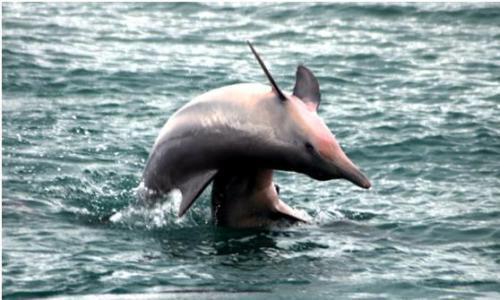Alexandre Paro
This project aims to estimate population size, site fidelity and the potential impacts suffered by the estuarine dolphin, Sotalia guianensis, along the south Rio Grande do Norte coast, Brazil.

Dolphins social behaviour.
The estuarine dolphin, Sotalia guianensis, is a marine mammal with coastal habitats frequently found in estuaries, mangroves and protected bays in shallow waters. Its distribution is the Atlantic coast of South and Central America. Despite being conspicuous, few investigations on population abundance have been done. The species has a conservation status considered “data deficient” by the IUCN Red List. Recently several efforts have been taken to change this picture. In Brazil most studies has been taken in south and southeast coast region, with moderate efforts in northeast and few in the northern coast. Our aim is to joint efforts to estimate the population size and site fidelity of this dolphin in south Rio Grande do Norte state, northeast Brazil; and contribute for the conservation of the species and it’s environment.
The beaches from south Rio Grande do Norte state are utilized by these dolphins all year long. Three major areas have been identified as core areas because of the regular usage by the dolphins. The project will be conducted in these three areas: Barra de Tabatinga, Pipa beach and Baía Formosa.
Regular cruises will be taken to these different areas. The method of data collection will consist of photo-identification of the individual dolphins trough its natural marks in the dorsal fin. Mark-recapture techniques may then be applied.
During the project we will identify the potential impacts that Sotalia guianensis population is suffering in the region. Different impacts that need to be accessed may occur trough its habitat, such as degradation of the habitat by sewage throwing, shrimp farms, sugar cane fields, unsustainable tourism with land speculation and hotel enterprises; dolphin watch activities and interactions with fishing. All this involve economical and social consequences for the communities and need to be better discussed with the local authorities and inhabitants. Our aim is to offer the base for actions that could be adopted to mitigate these impacts and guarantee the conservation of this population. Population abundance estimative can ultimately evaluate population status. It also makes it possible to monitor disturbances and access ecosystem health in case of top chain predators such as cetaceans.